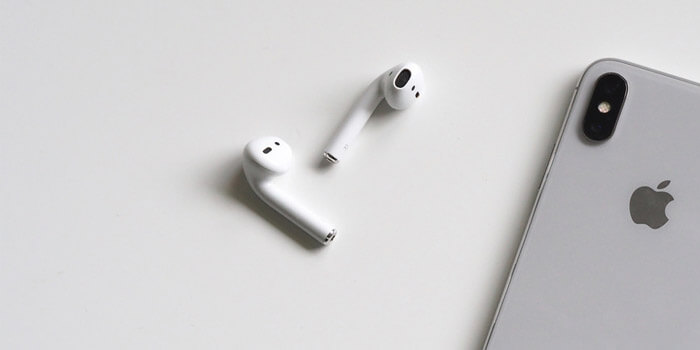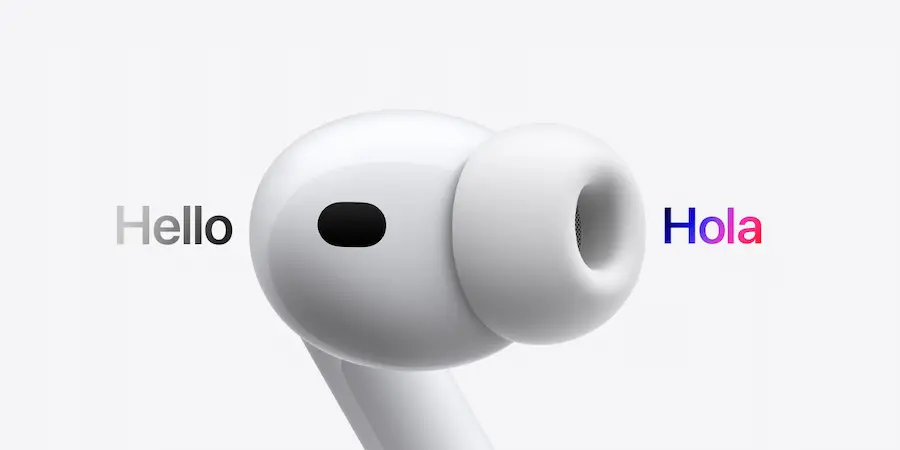Apple has shaken up its headphone family: the AirPods 4 introduce a version with active noise cancellation for a small extra, dangerously closing in on the AirPods Pro 3, while the latter refine their design, raise the ANC bar and add health sensors. With two offerings now stepping on each others toes, the decision isnt as clear as before. Which one truly suits you? Heres the comparison you need, with everything important to decide without hesitation.
Design and comfort: two clearly different philosophies
In fit and ergonomics, the AirPods Pro 3 play in another league. Apple says it gathered more than 10,000 ear scans and 100,000 hours of testing to shape smaller earbuds that align better with the ear canal, and you can feel it; they also debut tips that combine silicone with foam to seal better and keep comfort over long sessions. There are now five sizes, including an XXS, great news for those who have always struggled with tips that were too large.
The AirPods 4, on the other hand, bet on the open-fit philosophy. They are the most compact in the family, with a flatter and thinner design that many find more comfortable at first; however, that looser fit means less secure hold and, above all, less passive isolation than any in-ear. In short: perfect for walks, not so much for an intense run.
The durability also tips the scales: the Pro 3 jump to IP57 certification, giving extra peace of mind against sweat and rain, while the AirPods 4 remain at IP54, enough for everyday use but without the same safety margin. The Pro 3 case is more streamlined, and the AirPods 4 keep that mini pocket-friendly format; in both cases, zero hassles for daily carry.
Sound, cancellation and battery: where they truly diverge
Audio reveals the major differences. The AirPods Pro 3 offer more controlled bass, a wider soundstage and cleaner vocals thanks to a multi-ported acoustic design and revised transducers that better direct sound toward the ear; their high-excursion drivers and high-dynamic-range amplifiers handle both rock hits and the whisper of an acoustic without breaking a sweat. The result is a balanced presentation that adapts confidently to many genres.
The AirPods 4 take another route, with a warmer, bassier, darker sound signature, supported by a larger sound opening than the 3rd generation. They don’t chase studio-detail fidelity, but rather a friendly profile that favors electronic or hip-hop. If you pursue consistent fidelity across styles, the Pro 3 have the edge; if you like punchy low end, the 4 will suit you better.

Active noise cancellation is the breaking point. The in-ear seal and the new tip material allow the Pro 3 to reduce up to twice as much as the AirPods Pro 2 and nearly four times more than the original Pros, according to Apple; in practice, subway hum drops to a murmur, office HVAC is softened and nearby conversations are less intrusive. It’s like applying an RTX Voice-style filter, but to the real world: first the seal cuts much of the noise and then the active system cleans what’s left.
The AirPods 4 with ANC mark a milestone for being Apple’s first open-fit headphones with cancellation, and they work surprisingly well for their design, although their effect is moderate compared to a sealed in-ear; think of a 6/10, enough to reduce the surroundings without expecting library silence. Here the price jump between ranges is noticeable.
In battery life, the Pro 3 last up to 8 hours with ANC (or about 10 hours with noise control off/transparency), totaling around 24 hours with the case. The AirPods 4 stay at 5 hours without ANC or 4 with it, but the case stretches the total up to 30 hours. If your day is marathon-like, you’ll charge the 4s sooner, although their tiny case compensates in portability.
Smart features and buying: choose by priorities
The AirPods Pro 3 bring the flashiest tricks. Each earbud integrates a heart rate sensor that uses infrared light at 256 pulses per second to measure beats without an Apple Watch; in workouts, accuracy approaches dedicated devices, with differences of only a few beats both in easy runs and intervals. Also, Live Translation arrives in beta with real-time voice translation that works offline and waits for full phrases, relying on the H2 chip, Voice Isolation, ANC itself and beamforming microphones. Sounds like science fiction, but ordering coffee in another language has never been so simple.
In controls, both models allow pinch to play/pause and skip tracks, while the Pro 3 add swipe gestures to adjust volume. Both AirPods 4 and Pro 3 support Live Translation, with the more advanced version on the Pros, and both recognize head gestures to accept or reject calls with a nod or a shake; it may seem like a geeky wink, but when your hands are busy it’s gold, very much like “Raspberry Pi automation” applied to your daily life.
Prices in Spain: the AirPods 4 cost 149 euros (or 199 euros for the ANC version), and the AirPods Pro 3 are positioned at 249 euros. Do you need the best isolation for flights and open-plan offices, or do you want to measure your heart rate without a watch? Then the Pro 3 justify the extra. If you prioritize immediate comfort, good cancellation for an open design and the best price/performance balance, the AirPods 4 with ANC are the sweet spot for most; and if you don’t mind foregoing cancellation, the 149 euro option is even more tempting. Like moving from a standard display to a high refresh rate one, the difference is felt, but not everyone needs it every day; choose based on what you’ll use most.

